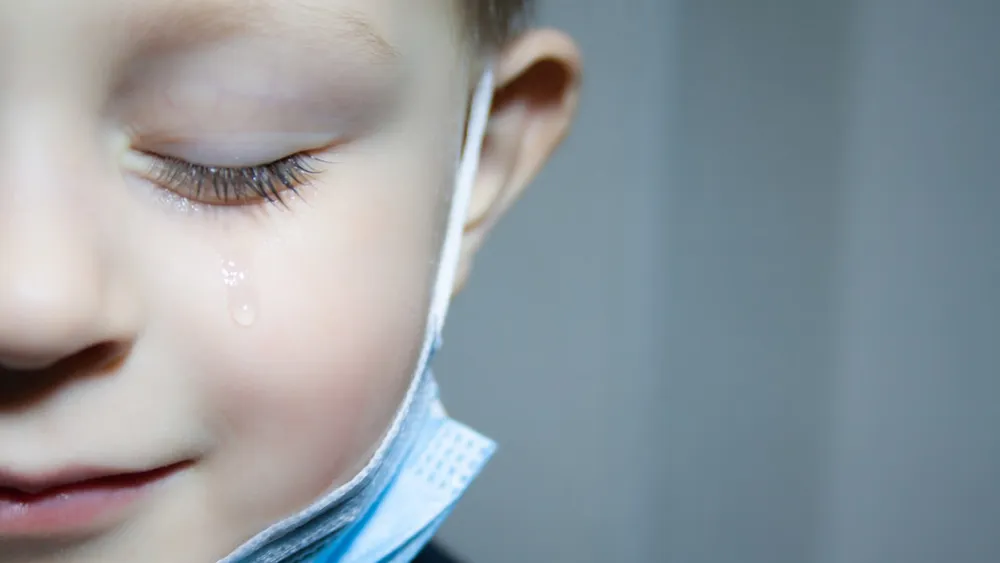




Family Health
Helping Children Navigate the Mental Challenges of This Ongoing Pandemic
Published: Feb. 19, 2021

No matter your age, the COVID-19 pandemic has likely affected your mental well-being.
As resilient as children often are, they’re not exempt from feeling the emotional wear and tear of continued social distancing and discontinued routines. It can be difficult for them to understand why all their play dates and soccer games were taken away last March and in many cases, still haven’t been returned.
For some kiddos, the decreased social involvement and responsibility is a nice change of pace, but for others, it may cause symptoms of stress, anxiety or depression, which can worsen as time goes on.
Signs To Look For
Younger Children
Younger children are often unable to relay their true feelings to us, so we must interpret their actions. Especially during a pandemic, it’s completely normal for your toddler or child to have an “off” day – a day when they seem more irritable or act like they’re bouncing off the walls.
But the following signs could signify that there’s more going on with your child than simply feeling a little “stir crazy”:
- Violent behavior toward you, a sibling or themselves
- Regression from a skill they had previously mastered (e.g., having accidents after being fully potty-trained for quite some time)
- Persistent physical complaints, such as recurring headaches or abdominal pain
Older Children
While older children and adolescents may be more equipped to explain their thoughts and feelings, it’s important to realize that they may not always feel comfortable doing so.
The following signs may indicate that your child is experiencing something that feels heavy or hopeless:
- A more withdrawn demeanor
- Significant changes in their sleep patterns or appetite
- A loss of interest in things they once enjoyed
Any of these signs should be evaluated by your child’s provider. And don’t be alarmed if you’re asked to leave the room during your child’s next visit. This is an important opportunity for the provider to establish trust with your child and get to the root of your concerns.
Lending Support and Guidance
Maybe your child isn’t displaying any of the red flags just mentioned. Great! But, Mom and Dad, your support and insight are still so invaluable right now – and it doesn’t take much. Sometimes, just being a little more present can help ward off those scary feelings and nervous energy while helping your kids understand all the changes and heightened precautions associated with this ongoing pandemic.
For little ones, try these tips:
- Give pockets of quality time. Take just 10 minutes away from your work at home to sit down and read a few stories or help them build with Legos. A few minutes is often enough to fill their love tank while reminding them that they’re still a priority.
- Date your child. Spend an hour or two – just the two of you – apart from other siblings. Go on a car ride to grab drive-thru smoothies, get the car washed or run curbside errands. They’ll feel special being your lone helper, and they’ll enjoy soaking up all your undivided attention.
- Get crafty. Spend the morning making greeting cards for friends, family and residents in nearby nursing homes. Then go on an adventure to drop them off. This is a great way to stay busy and brighten someone’s day.
- Lean on child-appropriate messaging. It’s safe to talk to your child about the virus, why we wear masks and why we haven’t visited Grandma and Grandpa in a really long time. But images from the news may be too intense for young children. Instead, messages from programs like “Sesame Street” or “Daniel Tiger’s Neighborhood” may be more appropriate and are generated for younger audiences. Highlights has preschool- and elementary-geared magazines. Look for them at your local library.
Showing support to your adolescent doesn’t always require fun activities and quality time, but those things certainly don’t hurt. Here are some ideas to connect with your child while still allowing them some independence and control.
- Set up safe outings for them. Schedule some time to explore a museum together or organize a movie theater rental to split between friends. This gives them something to do and allows them some safely-spaced socialization.
- Be honest with them. Allow them to relate to you. Open up about any challenges you may be having. If they return the favor, validate their feelings and continue to check in on them frequently.
- Ask questions and answer them. Children in middle school and high school are usually fairly engaged in current events thanks to the news and online articles. It’s important to ask questions to gauge how much they’re understanding and answer any further questions they may have.
Keep in mind: The perfect parent doesn’t exist. Sometimes it’s easier to raise your voice than it is to take those 10 minutes you promised to build that Lego car. More family “togetherness” can easily lead to increased bickering and shorter tempers for everyone. Try taking a step back from sibling shouting matches, toddler tantrums and spousal sparring to see what led to them in the first place. Practice patience, grace and even self-care. It’s easier to set a positive tone and environment when your cup is full.
Looking Ahead
Of course, we don’t have an answer for your child’s million-dollar question: When will life go back to “normal”? But continuing to make short-term plans to look forward to certainly helps break the monotony of the long haul we still may be in for.
Think ahead to outdoor summer activities. Plan future camping weekends – even backyard camp-outs! Schedule fishing trips or let your kids have a say in what you’ll plant in the garden this year.
No matter your child’s age, communication is key, and daily check-ins are so important. Ask your child what their favorite part of the day was. The answer may surprise you and help guide future plans. Whatever those plans may be, continue masking, handwashing, maintaining social distance and opting for activities that are outdoors or in well-ventilated areas.
We’re all looking forward to more normalcy and life as we once knew it. But it’s important to recognize that once levels of the virus go down and more individuals are protected by vaccination, there will be another adjustment period for you child as they start to become more socially engaged again. Your child’s provider will be here for you then, and they’re here for you now. Don’t hesitate to reach out if you think your child is exhibiting signs of stress, anxiety or depression. We want to help you navigate this challenging time!
Remember: If you’re still trying to minimize your family outings, many visits can be accomplished via telehealth. Ask your child’s provider if a telehealth visit is appropriate for your concerns.
More Resources
- Find a pediatrician.
- Yes, children can get COVID-19. Read more on what you need to know.
- Read similar articles related to COVID-19.


